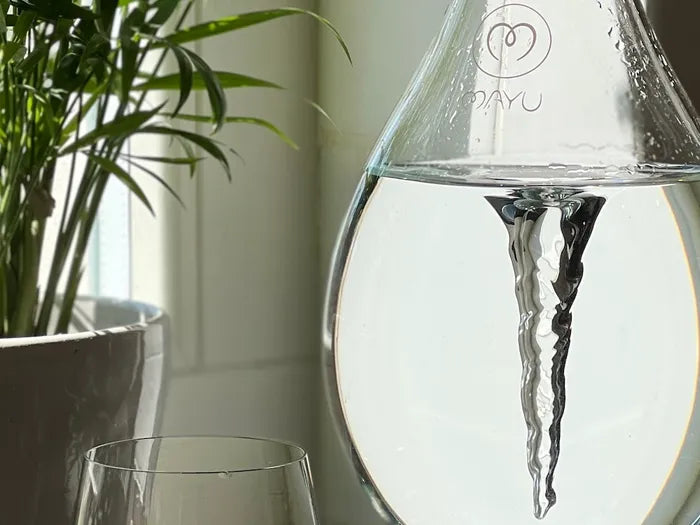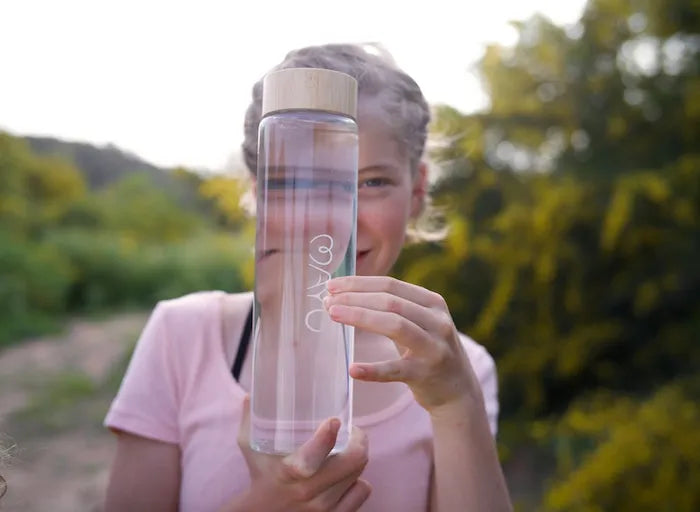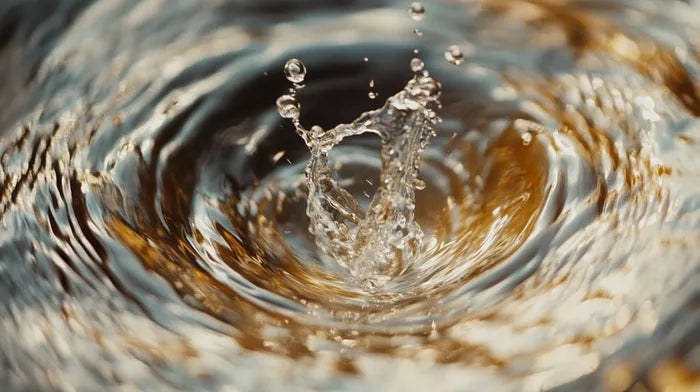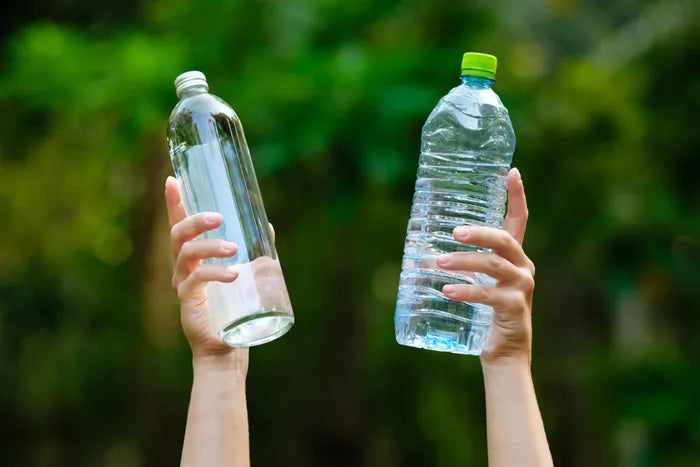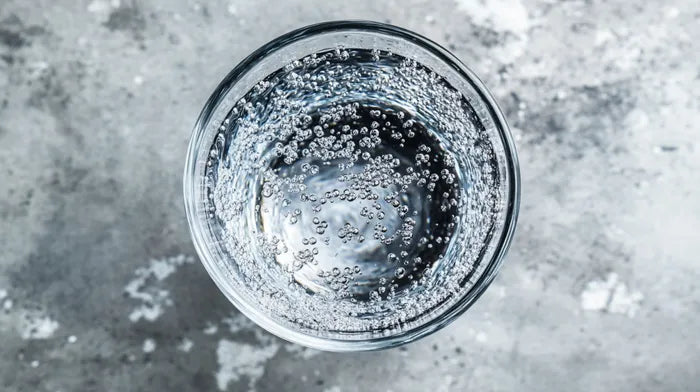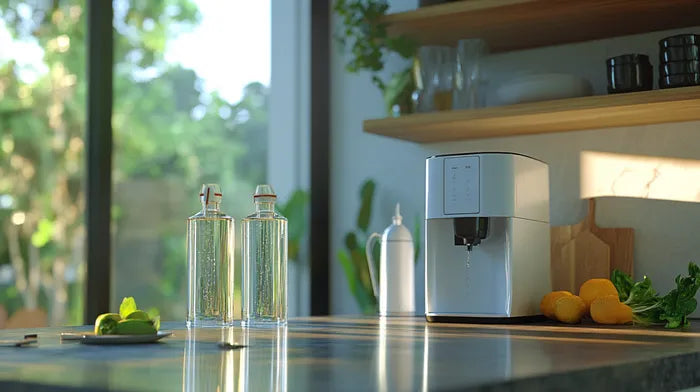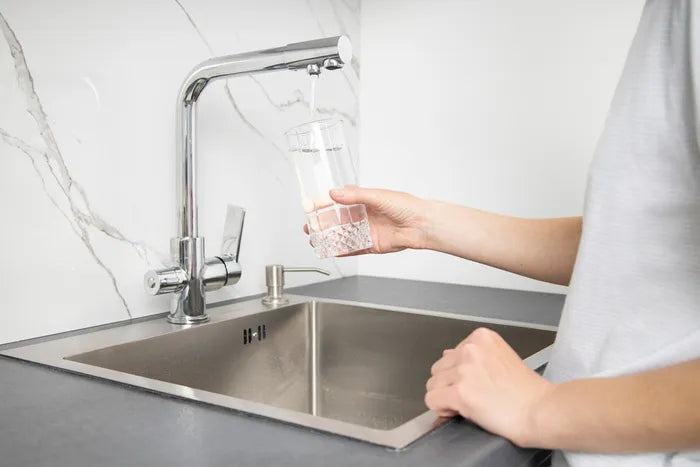Everything There Is to Know About Trihalomethanes in Drinking Water
Published October 6, 2024

Trihalomethanes are a group of volatile and potentially toxic chemical compounds formed when water is treated with chlorine, which then reacts with organic matter in water. Trihalomethane compounds are colorless and evaporate from the water into the air.
At elevated levels, trihalomethanes have been associated with negative health effects like cancer and adverse reproductive outcomes. We have outlined everything there is to know about trihalomethanes in this post.
Examples of Trihalomethanes
There are four significant trihalomethanes found in disinfected drinking water, and their combined concentration is known as total trihalomethanes (TTHM).
To understand trihalomethanes, it is important to first consider methane, which is a single carbon with four bonds linked to four hydrogen molecules (CH₄). To make a trihalomethane, three of those hydrogen atoms are removed and replaced with three halogens. A halogen is any element from the seventeenth column of the periodic table. If all three of the substituted halogens are chlorides, it creates chloroform (CHCI₃). If all three molecules are bromide, it creates bromoform (CHBr₃). One bromide and two chlorides make bromodichloromethane (CHBrCl₂). Therefore, trihalomethanes are a group of four chemicals: bromoform, bromodichloromethane, chloroform, and dibromochloromethane.
- Bromoform Bromoform is a colorless liquid with a chloroform-like odor. It is denser than water and slightly soluble. It has been classified as a human carcinogen and is toxic by ingestion, inhalation, and skin absorption.
- Bromodichloromethane Bromodichloromethane is colorless and dissolves in water but also quickly evaporates into the air. Bromodichloromethane was formerly used as a flame retardant or solvent for fats and waxes because of its high density for mineral separation. It is harmful if ingested and causes liver and kidney damage.
- Chloroform Chloroform is a colorless liquid that quickly evaporates into a gas. Chloroform is harmful to the eyes, skin, liver, kidneys, and nervous system. These chemical compounds can be toxic if swallowed or inhaled, and exposure to chloroform could also cause cancer.
- Dibromochloromethane Dibromochloromethane is a colorless to yellow liquid with a sweetish odor. It has been classified as a possible human carcinogen.
How Do Trihalomethanes Affect the Human Body?
The standards of drinking water are called maximum contaminant level or MCL. MCLs have been put in place to reduce the risk of chemicals in drinking water. Some MCLs limit the levels of chemicals that pose a long-term risk, and others limit the daily amount consumed for chemicals that pose an immediate risk.
The trihalomethane MCL is set at a safe level that balances long-term health risks but also keeps the drinking water safe from bacterial contamination. The Environmental Protection Agency has stated that the maximum level of trihalomethanes in large surface public water systems is 80 parts per billion.
Individuals could be exposed to trihalomethanes in water by ingesting them or absorbing them through the skin. Trihalomethanes easily vaporize into the air, so inhalation exposure to these compounds can be significant, especially when bathing and showering.
High levels of trihalomethanes are dangerous. Trihalomethanes have been associated with negative health effects. People who consume trihalomethanes over many years have an increased risk of developing cancer. These chlorination by-products have also been linked to heart, lung, liver, kidney, and central nervous system damage. Pregnant women are also at a greater risk as trihalomethanes have been shown to negatively impact reproduction and cause miscarriages.
Can You Remove Trihalomethanes From Drinking Water?
Fortunately, trihalomethanes can be removed from drinking water. The easiest way to reduce or eliminate trihalomethanes from drinking water is to use a water pitcher with a carbon filter or install a tap-mounted carbon filter. Other methods include reverse osmosis, enhanced coagulation, UV filters, and water softeners.
In Summary
The chlorination process is essential for purifying water to make it safe for human consumption. The levels of chlorine in water are carefully monitored to ensure they remain at a safe standard.
However, the chlorination process also produces trihalomethanes, which can be harmful to human health. Trihalomethanes are known carcinogens and increase the risk of cancer and miscarriage in pregnant women. It is recommended to have your water tested to see the level of trihalomethanes.












